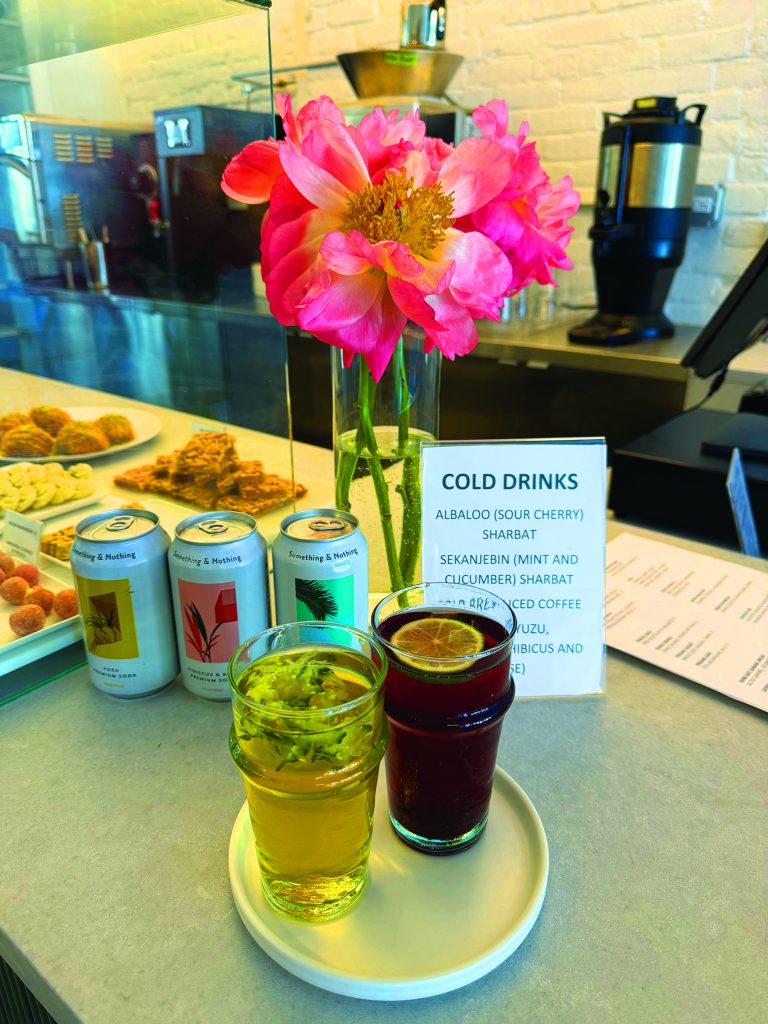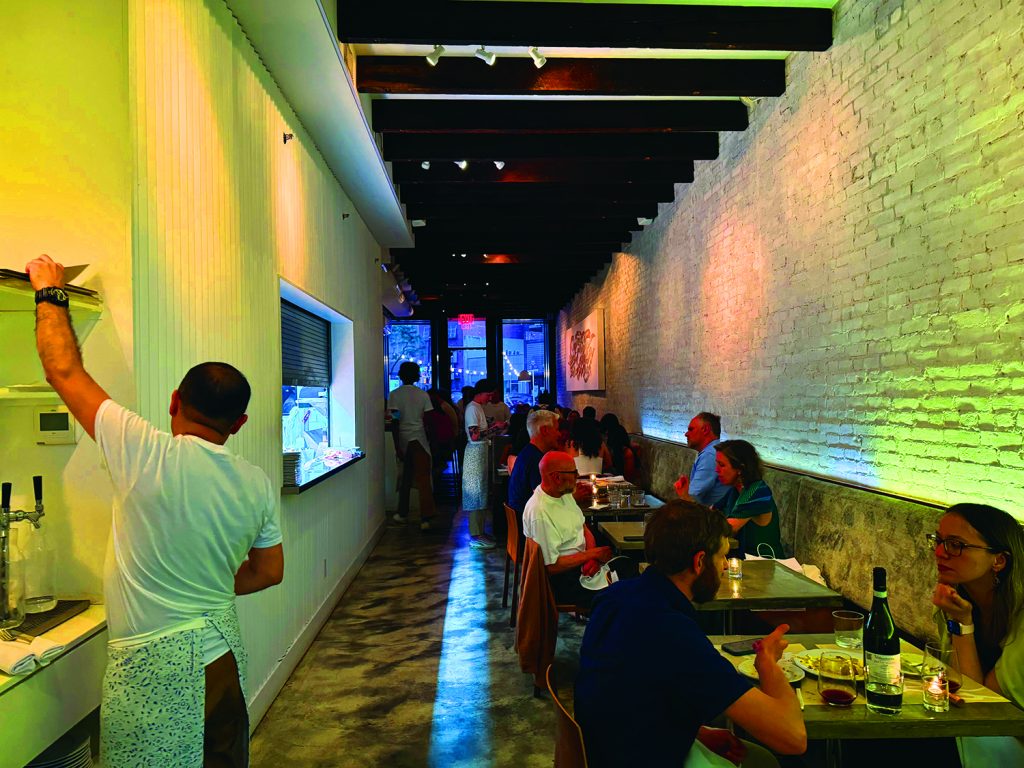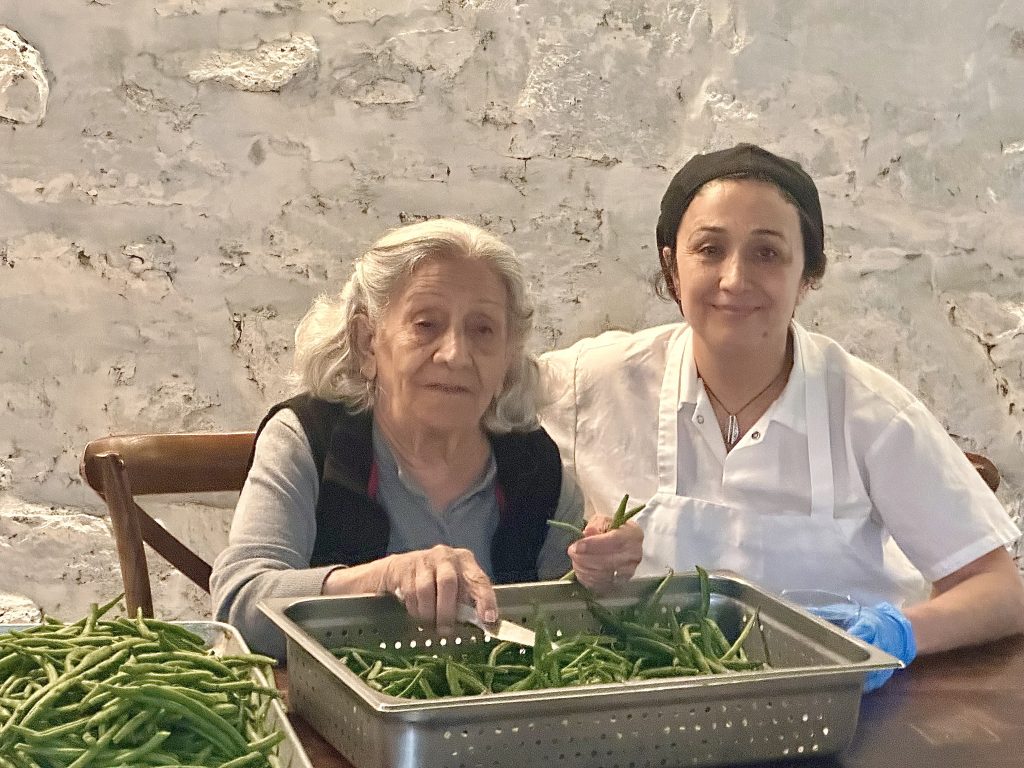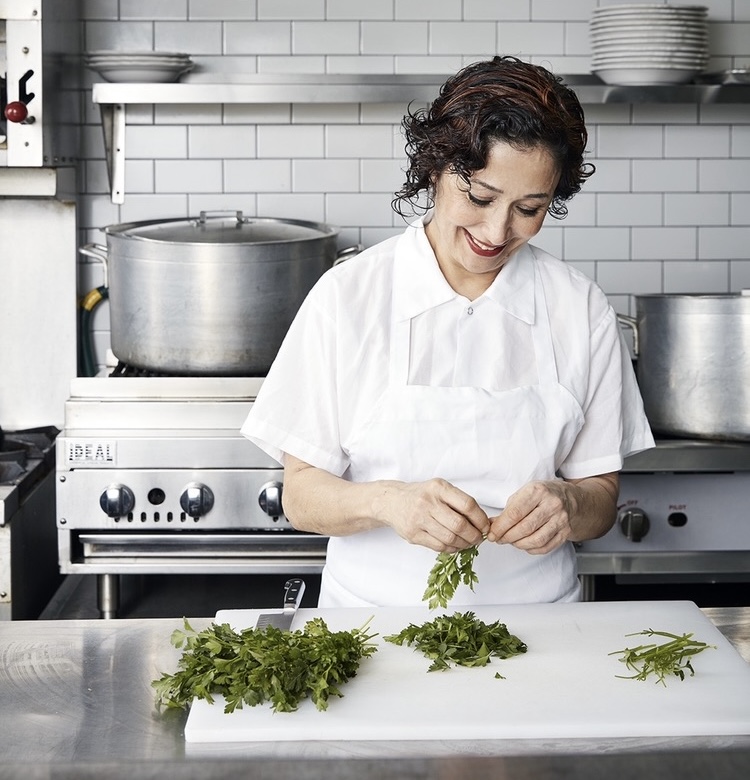Fascinated by the food scene in New York City in the 80’s, Nasim Alikhani dreamed of opening her own restaurant. After years of honing her skills and overcoming obstacles, Chef Alikhani now serves authentic Persian cuisine with her own unique modern twist at Sofreh restaurant and Sofreh Cafe.

Nasim Alikhani is the James Beard nominated chef behind the wildly popular Iranian restaurant Sofreh, and its newly opened sister cafe, Sofreh Cafe. Last month, I got the opportunity to hear her speak on a panel hosted by the NYPL called Translating Taste: Food Writing Across Cultures. More recently, I had the distinct privilege of interviewing her to learn more about her experience as an immigrant, a daughter and a mother, an Iranian and an American, and above all, a cook.
Hi Nasim, thank you for agreeing to chat with me. When I heard you speak at the Translating Taste event, I was so mesmerized by your story, and I’m excited to be sharing it here.
Thank you!
So you’re from Isfahan, a province in central Iran. How did you end up in New York, and what was your early experience like as an immigrant living in Queens?
I came to New York in 1983 as a law student. By the time I settled in here, I realized that I had completely lost interest in continuing with law, but I was on a student visa so I had to keep my status. At the time I was working all kinds of jobs as a server, as a babysitter, whatever I could get my hands on. My first job was as a nanny for an Iranian family that lived in Flushing, Queens. About a year later, I had saved enough that I could afford to live by myself, and I ended up in the Jackson Heights/Rego Park area.
I was fascinated with the food in the area. There was so much to discover, like I had no idea what dosa was, I had no idea about Chino-Latino food. It was just an incredible learning experience. That was my favorite part of my early time here: once or twice a week enjoying this food, feeling alive, and you know, just being a part of the New York scene.
You mentioned that it felt like the whole world was cooking in Jackson Heights. Was that the first time that you were able to experience so many different cultures and cuisines in one place?
Yeah, absolutely. I come from Iran, which is a very large country. Each region cooks in completely different ways, so I was already accustomed to experiencing varied flavors within the same country. But it was really mind blowing to just see, like in one block, you have Columbian cooking. And then you turn the corner and India is cooking, and around another corner is Brazilian food. Yes, that was the first time that I experienced it in such close proximity and it was just really incredible.
At the same time you mentioned feeling homesick and how you sustained yourself on memories. Can you share more about that experience?
Although I went out once or twice a week, I mostly lived on a very tight budget. So I relied on my suitcase that my mother packed for me with basics like rice and lentils, but also with herbs and spices like saffron. I would cook these big meals that I could eat throughout the week, and every time I cooked, I tried to use the ingredients she packed me. I really lived on that suitcase. I was cooking a lot from both memory and also nostalgia, which helped me feel a little closer to home.

It’s really interesting, this idea of traveling and eating out of your suitcase that your mom packed for you. Maybe it’s a common experience for immigrants. Every time I visit my mom, she’ll pack me shiitake mushrooms and a bunch of Chinese ingredients.
Absolutely. Every time we went back home with my kids, we would come back with cases and cases of my mother’s marmalade. And I’m like, “Mom, we don’t eat so much marmalade”, and she was always like “Take it! The kids will eat it.” I knew they wouldn’t, but I took it because that is a way she expressed her care.
My mother passed away in October and I still have the marmalade that she gave us a year before. And it’s still perfect. So right now I’m treasuring it one spoon at a time.

That must be extremely bittersweet. You’ve also memorialized your mother’s cooking in a much more lasting way in your cookbook, right?
Yeah, there’s a chicken recipe in there that’s truly her own recipe. It was a staple of every party we had for the last 25-30 years, so I knew that I had to have that chicken in the book. And the way I plated it, it’s exactly the way it used to be plated at every dinner party she hosted. Towards the end of her life, my mother had memory issues. But as soon as she saw the chicken she exclaimed, “Look! What is my chicken doing here? That’s my chicken!”

That’s beautiful. And speaking of parties, “Sofreh” is a term for an iconic Persian fabric that serves as the backdrop for seasonal feasts and celebrations. It’s also the name of your restaurant and your cookbook. Can you talk about how you started Sofreh?
I wanted to open a cafe for years, but when I found out I was pregnant with twins, I decided to push back that dream in order to raise my kids. I was very active in raising my kids and also kept myself busy by volunteering at non-profits and running marathons. Around the time the kids were in middle school, it hit me that they would be leaving the house at the same time. So I started revisiting this idea that I kept deferring. I started cooking massive projects from home, and people were blown away. After taking on bigger events, I realized that not only was the passion alive and well, it was burning inside of me.
So I told my husband, “I am opening a restaurant.” By the time the kids finished middle school, my husband knew that I was dead set on opening a restaurant. He has always been incredibly supportive – this year is going to be 38 years of marriage – and he’s also a smart businessman. I can dream big and I can execute massive projects, but I am really bad at money stuff, so he came in and really helped me to run a business.
But everything took much longer than we expected. This whole restaurant project was supposed to be something that I could do when the kids headed off to college. They went to college, graduated from college, and I still had not opened Sofreh. Seriously, it took six years. Those years were very hard. Six years of fighting for permits and dealing with construction issues and another seven months waiting for the gas connection.
What did menu development look like during that time?
After six years of waiting, I knew exactly what I was going to do. I had been throwing parties for people for 20-30 years by that point, so I knew exactly what people liked. It also helped to remember that this was just my starting menu, and that menus evolve and change. So I started with something very basic. We had a fish dish, a chicken dish, and a vegetarian dish that were all solidly grounded in our cuisine. We also had two rice dishes and a bunch of appetizers and a couple of iconic dishes that to this day still exist in my menu.
What are some examples of those iconic dishes?
We have a lot of yogurt in our cuisine. And rice, of course. Plain basmati rice and herb rice are very iconic to me. There is “Ash”, which is a thick noodle stew. And eggplants – I love eggplants. I have seen pretty much the entire world’s interpretation of eggplants, and I can say that hands down, we have one of the most varied and interesting interpretations.
Can you talk a bit about how you balance tradition and modernism as you evolve your menu?
For me, tradition is so important. Tradition is who I am. Staying in the course of traditional food is my mission. I want to introduce the world to this incredible rich cuisine that is so old and is so underrated. It’s my mission to preserve it.
At the same time, as a chef, I also ache to do something new. I tread this fine line very carefully,
So I won’t just wake up and say, for example, “Let me create a dish with mushrooms”, which is not an ingredient that exists in our culture. No, I thought very hard and experimented for so many months before I introduced a dish using maitake mushrooms.
Ultimately, I deviate from tradition meaningfully. The care and the love and the attention throughout still bring an aspect of tradition to every dish I add to the menu.
Both your restaurant and your cafe are located in the Prospect Heights/Park Slope area. Can you talk about why you chose these specific neighborhoods?
When I got this building, this neighborhood was not what it is today. 12 years ago, Flatbush and Prospect Heights were not these cool places. However, I knew that I didn’t want to have a restaurant in Manhattan, because I wanted to be part of a community. And I knew Brooklyn incredibly well. I knew every neighborhood of it. I looked at Carroll Gardens, because I was searching for a sense of a neighborhood, but there was nothing available there. I wasn’t interested in being up in Brooklyn Heights, because it just seemed so stuck up. I couldn’t find anything in the Fort Greene area at that time, and I looked up Vanderbilt a lot, but nothing was available. So I was just really focusing my search in this vicinity, because it was nice, full of restaurants, and had a sense of community. Then this building popped up and the rest is history.
